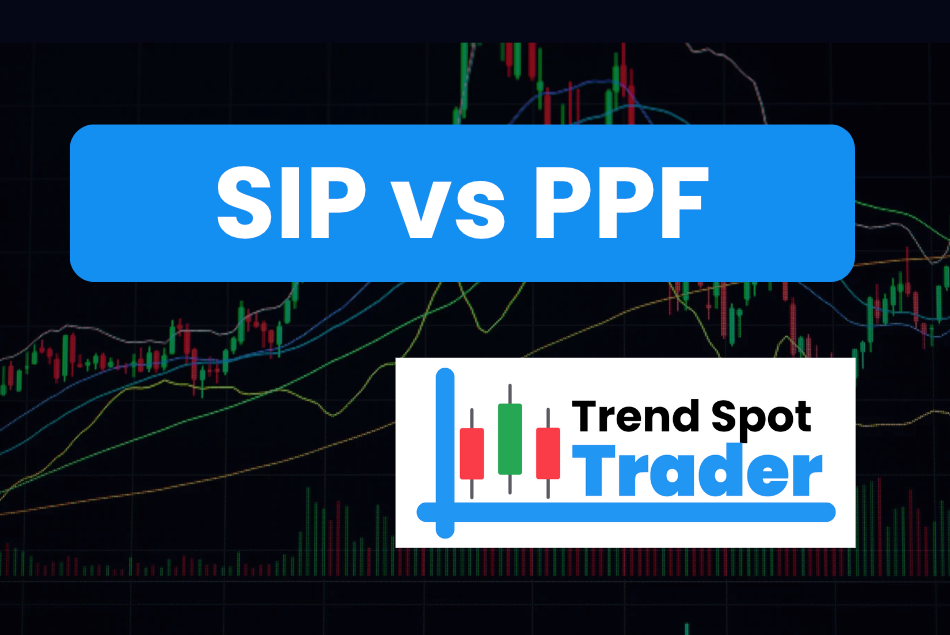SIP vs PPF: Understanding the Differences and Choosing the Right Option for Your Financial Goals
When it comes to saving and growing wealth in India, individuals are often faced with numerous investment options. Among the most popular are Systematic Investment Plans (SIPs) and the Public Provident Fund (PPF). Both are powerful tools for achieving financial goals, but they differ significantly in structure, benefits, and suitability. Here’s a detailed comparison to help you make an informed decision.
What is SIP?
SIP (Systematic Investment Plan) is a disciplined investment strategy where you invest a fixed amount periodically (e.g., monthly) in mutual funds, particularly equity or debt funds. SIP allows you to benefit from market growth and minimize risks through rupee cost averaging.
Key Features of SIP
- Market-Linked Returns: Returns depend on the performance of the mutual fund portfolio.
- Flexibility: Start, stop, or modify SIPs at any time.
- Liquidity: You can redeem investments at any point (except in ELSS funds with a lock-in period of 3 years).
- Risk and Volatility: Returns are not guaranteed as they depend on market performance.
- Potential for High Returns: Historical data suggests equity SIPs often deliver 10-15% annualized returns over the long term.
What is PPF?
The Public Provident Fund (PPF) is a government-backed, fixed-income investment scheme that offers tax benefits and guaranteed returns. It is a safe, long-term savings instrument with a 15-year lock-in period.
Key Features of PPF
- Fixed Returns: The interest rate is set by the government every quarter (currently around 7-8% per annum).
- Tax Benefits: Contributions qualify for deductions under Section 80C of the Income Tax Act, and the maturity amount is tax-free.
- Lock-in Period: Funds are locked for 15 years, with partial withdrawals allowed after the 7th year.
- Safety: Being government-backed, it offers capital protection.
- Limited Contribution: A maximum of ₹1.5 lakh can be invested per financial year.
Key Differences Between SIP and PPF
| Parameter | SIP | PPF |
|---|---|---|
| Nature of Investment | Market-linked (mutual funds) | Government-backed fixed-income instrument |
| Returns | Varies based on market performance (10-15%) | Fixed and guaranteed (~7-8%) |
| Risk | Moderate to high (depends on fund type) | Minimal (virtually risk-free) |
| Lock-in Period | None (except for specific funds like ELSS) | 15 years |
| Liquidity | Highly liquid | Limited liquidity |
| Tax Benefits | Tax benefits only for ELSS funds | Section 80C deduction and tax-free returns |
| Flexibility | High (customizable investment amount and tenure) | Low (fixed lock-in, capped contributions) |
Suitability: Who Should Choose What?
SIP is Ideal For:
- Wealth Creation: Investors looking for higher long-term returns.
- Inflation-Adjusted Growth: Equity SIPs typically outpace inflation.
- Risk Tolerance: Those comfortable with market volatility.
- Flexible Savings: SIPs are perfect for those needing liquidity.
PPF is Ideal For:
- Risk-Averse Investors: Ideal for individuals seeking guaranteed returns and safety.
- Tax-Saving Goals: Offers comprehensive tax benefits.
- Long-Term Savings: Suitable for goals like retirement or children’s education.
- Capital Preservation: Ensures your principal is secure.
Can SIP and PPF Complement Each Other?
Yes, combining SIP and PPF can provide a balanced portfolio:
- SIP: Allocates funds to high-growth, market-linked assets for wealth creation.
- PPF: Ensures stable, risk-free growth and tax efficiency.
For instance, you can use PPF for secure, long-term goals and SIPs for aggressive wealth-building.
Conclusion
Both SIP and PPF have their merits and drawbacks. Your choice should align with your financial goals, risk appetite, and investment horizon. If you’re a risk-tolerant investor aiming for wealth creation, SIPs are an excellent option. On the other hand, if safety and tax efficiency are your priorities, PPF should be a part of your portfolio.
For the best results, consider seeking advice from a financial advisor to craft a strategy that suits your unique needs.





